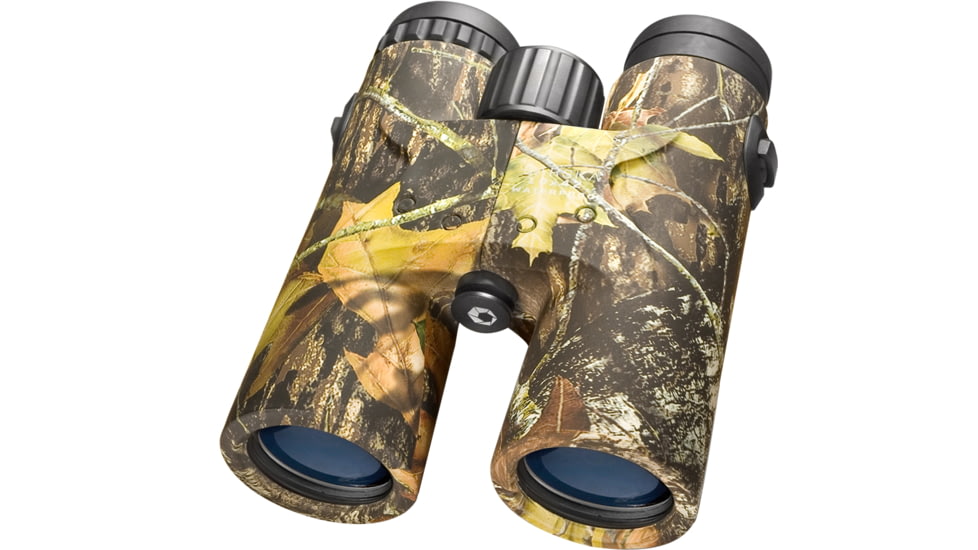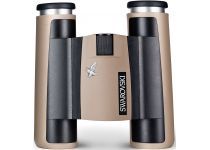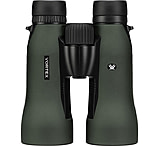There is no hard and fast rule for buying binoculars, but a compact binocular is a smaller option and can usually fit in a large pocket or a purse. What makes the binocular small is the use of smaller front lenses. To see how large a specific model is, look at the second number in the classification, which is the size of the front lenses in millimeters. In general, any binocular with a second binocular number of 26 or less is a compact model. There are a few compact binoculars with a second number of 28, but these 28s, though wonderful to handle and use, really push the limit in terms of size. You may have problems getting them in your pocket or your purse.![]()
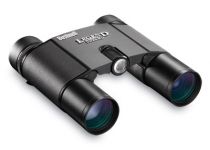 I've had a fascination with compact binoculars most of my life. To be sure, I own and use everything in terms of binocular size from the smallest to the largest giant binoculars, but compacts have always appealed to me. Just something about being able to take them with you and not have them get in the way. Compact binoculars fit my on the go lifestyle, perfectly. Whether I am bicycling, cross country skiing, canoeing, hiking, or just shopping or out for an evening walk, the small size of a compact binocular makes it my constant companion. As a binocular expert and user for over forty years, I can tell you that compact binoculars have their advantages and disadvantages, just like any other binocular. They may or may not be the perfect binocular for you.
I've had a fascination with compact binoculars most of my life. To be sure, I own and use everything in terms of binocular size from the smallest to the largest giant binoculars, but compacts have always appealed to me. Just something about being able to take them with you and not have them get in the way. Compact binoculars fit my on the go lifestyle, perfectly. Whether I am bicycling, cross country skiing, canoeing, hiking, or just shopping or out for an evening walk, the small size of a compact binocular makes it my constant companion. As a binocular expert and user for over forty years, I can tell you that compact binoculars have their advantages and disadvantages, just like any other binocular. They may or may not be the perfect binocular for you.
What Are Common Styles of Compact Binoculars?
Just as in full size binoculars, compact binoculars come in two basic prism types - porro binoculars and roof prism - and these prism types affect the body shape and the handling qualities of the binocular. Again, there are pluses and minuses to each design.
Roof Prism Binoculars
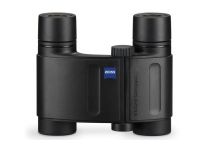 Roof prism is the popular body style with straight barrels where the eyepieces and front lenses are in a straight line. This makes for a very slim profile which is a big plus in a compact, since compact binoculars are all about small size in the first place. Keep in mind, though, you need to check the specs to see if the roof prism compact binocular in question has phase corrected (PC) roof prisms. You'll need PC roof prisms to keep up, optically, with the other type of body design, a porro prism compact. A phase-corrected roof prism will be more expensive, but it is well worth it if you need the performance.
Roof prism is the popular body style with straight barrels where the eyepieces and front lenses are in a straight line. This makes for a very slim profile which is a big plus in a compact, since compact binoculars are all about small size in the first place. Keep in mind, though, you need to check the specs to see if the roof prism compact binocular in question has phase corrected (PC) roof prisms. You'll need PC roof prisms to keep up, optically, with the other type of body design, a porro prism compact. A phase-corrected roof prism will be more expensive, but it is well worth it if you need the performance.
You also have some body design options on how a roof prism compact binocular folds. The most popular system in a roof prism compact binocular is a double hinge design which allows each binocular barrel to fold in ward against a third, center section of the body. This saves the maximum amount of space when folded together, allowing the binocular to fit in even the smallest pocket. The double hinge design, however, is awkward and slow to open and align the barrels since you must carefully align each barrel. The double hinge design is also more likely to get bumped out of position when the binocular is worn around your neck. The more conventional single hinge style as found on a large binocular does not allow you to fold the binocular together as compactly, but it's quicker and easier to open and the barrels are less prone to being bumped out of position.
Roof prism compact binoculars can be found for as little as $20 these days, but to get a phase corrected roof prism of decent quality, you should expect to pay closer to $200. Some excellent values in a PC (phase-corrected) roof prism compact binocular come from Kowa, Vortex, Leupold, and Pentax.
Premium compact roof prism binoculars offer still better optics and construction and are state of the art when it comes to the compact binocular world. These begin with the Steiner compacts and continue up, in quality, performance, and price, to the top group of players in the compact binocular world with the Nikon ProStaff binoculars and the Leica Ultravids.
Porro Prism Binoculars
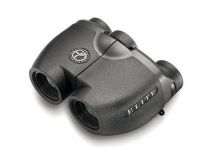 In a compact binocular with a porro prism, we actually use a variation of a porro prism design known as a reverse porro prism. Any binocular where the eyepieces and the front lenses are not in a straight line is a porro prism. In a full size porro prism binocular, the front lenses sit out wider than the eyepieces. In a reverse porro prism, used in a small binoculars, just the opposite is true - the eyepieces sit out wider than the front lenses. This produces a very distinctive shape. A reverse porro is definitely chunkier and not as trim and sleek as a roof prism, so handling is not as nice as a roof prism compact binocular, but there are advantages. A porro prism is optically more efficient than a roof prism and cheaper to build to the high optical standards, which is a fancy way of saying that you get more for your optical dollar with a porro prism. Indeed, you can get some optically very good reverse porro prism compact binoculars for a fraction of what it costs to get a premium roof prism compact binocular.
In a compact binocular with a porro prism, we actually use a variation of a porro prism design known as a reverse porro prism. Any binocular where the eyepieces and the front lenses are not in a straight line is a porro prism. In a full size porro prism binocular, the front lenses sit out wider than the eyepieces. In a reverse porro prism, used in a small binoculars, just the opposite is true - the eyepieces sit out wider than the front lenses. This produces a very distinctive shape. A reverse porro is definitely chunkier and not as trim and sleek as a roof prism, so handling is not as nice as a roof prism compact binocular, but there are advantages. A porro prism is optically more efficient than a roof prism and cheaper to build to the high optical standards, which is a fancy way of saying that you get more for your optical dollar with a porro prism. Indeed, you can get some optically very good reverse porro prism compact binoculars for a fraction of what it costs to get a premium roof prism compact binocular.
Pros of Compact Binoculars
When you need a binocular, any binocular is better than no binocular. That's the beauty of compact binoculars - you are much more likely to take a compact binocular with you because of the smaller size. The very finest and most expensive binocular in the world won't do you any good if you left it at home because you didn't want to carry the size and the weight. Indeed, I've added more birds to my life long bird list with compact binoculars than my best full size, dedicated birding binoculars. Why? Birds are notorious for appearing at unexpected times and in unexpected places (they don't read the field guides) and the small size of a compact binocular allows it to be a constant companion in my purse. A compact binocular is always there when I need it. The small size and light weight of a compact binocular also makes a compact binocular especially useful for folks like photographers, hikers, and hunters who are carrying a lot of other gear. These folks still need a binocular, but adding a full size model to an already heavy load can be the straw that breaks the camel's back.
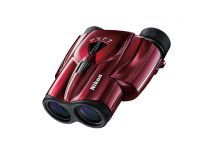 What compact binoculars lack in size, they sometimes make up in terms of optical correction, especially premium compact binoculars. Smaller lenses are easier and less expensive to produce to high optical standards than larger lenses. As a result, premium compact binoculars are nearly always better than their already excellent, but larger, premium counterparts in terms of edge sharpness and freedom from barrel distortion, flaring, and coma. If you are picky about optical correction and willing to forgo the optical advantages of larger objective lenses, a premium compact binocular may be your best choice.
What compact binoculars lack in size, they sometimes make up in terms of optical correction, especially premium compact binoculars. Smaller lenses are easier and less expensive to produce to high optical standards than larger lenses. As a result, premium compact binoculars are nearly always better than their already excellent, but larger, premium counterparts in terms of edge sharpness and freedom from barrel distortion, flaring, and coma. If you are picky about optical correction and willing to forgo the optical advantages of larger objective lenses, a premium compact binocular may be your best choice.
Another plus for compact binoculars is a lower relative price. You can buy the very best compact binoculars for half or even a third the price of its larger, full size premium counterpart. Going compact in a binocular can bring that expensive European or Japanese brand of binocular into your price range. Personally, I'd rather have the very best quality compact than an equally priced, but average quality, larger binocular. That's me, though - I know and understand how to work around the limitations of a compact binocular. If you are a beginner to binoculars, I still recommend a full size binocular as a first purchase - it's important to get all the help you can in terms of performance. Add a compact as your second binocular.
Cons of Compact Binoculars
In general, compact binoculars will not offer the resolution (ability to distinguish very fine detail) as their larger siblings, simply because smaller binocular objectives (front lenses) cannot offer the performance of larger objective lenses. This is simply a law of optics regarding lens size and the ability to separate fine detail. In other words, a compact binocular will not appear quite as sharp and crisp as its equivalent in a larger binocular. Keep in mind, however, that we are talking in terms of all else being equal, comparing a compact binocular with the same brand and model in a larger version. When we begin to compare different models and sizes at different prices, we also have to account for lens quality. Lens quality can be just as important as lens size when it comes to performance. In fact, a premium (and expensive) compact binocular with high grade, perfectly ground and polished lenses can easily outperform a cheap full size binocular. We have to compare apples to apples, here.
A more significant shortcoming of compact binoculars, no matter what the quality, is eye fatigue, especially over long observing sessions. Smaller objective lenses on compact binoculars produce smaller exit pupils - the beam of light that exits the eyepiece and enters your eye. As a result, you must be more precise when centering the eyepieces over your eyes. On some compacts, even some premium compacts, being off just a little when centering the binocular over your eyes will produce detectable eye strain. For this same reason, it is also very important on a compact binocular to set the interpupillary adjustment (the width between the barrels to fit your eyes), very carefully. Opening the binocular too wide or not wide enough produces the same problem of your eyes not being centered over the eyepieces. Experience using a binocular will go a long way to minimize this problem, but I still use and recommend a full size binocular when it comes time to use a binocular for many hours a day. Compact binoculars are just not suited for long, hard observing sessions. Compact binoculars are at their best for more casual work.
One of the most common criticisms of compact binoculars is lower image brightness, for the same reason as lower resolution - smaller front lenses. While it is true that smaller lenses do not take in as much light as larger front lenses, this image brightness issue is very much over emphasized with compact binoculars. It gets repeated so often perhaps because image brightness is the easiest binocular concept to visualize and explain. However, it is a mistake to automatically dismiss a compact binocular as not being bright. In my actual experience, out in the field, in side by side tests with larger binoculars, a premium compact binocular can hold its own with a larger binocular in terms of brightness until it is nearly dark enough to need the lights of your car. That's enough image brightness for nearly any daytime use. Unless you really need a binocular for very low light conditions, it is a mistake to overlook a compact binocular on the basis of image brightness.
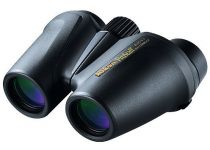 Small size and lightweight are the main reasons for buying a compact binocular, but these same things work against you when trying to hold a binocular steady. In full size binoculars, I generally recommend a magnification (first binocular number) of no more than 10 for the sake of image steadiness. A compact binocular in 10x is even harder to steady and use than full size 10x binocular because of its lighter weight. I still own and use 10x compact binoculars and prefer a 10x in a compact binocular for some applications, but image steadiness can be a problem for me with my 10x compacts. I often resort to bracing my 10x compacts against a tree or other impromptu support to get the steadiness I need. That's why I also own and use 8x compact binoculars. An 8x compact binocular is noticeably easier to steady than a 10x and the wider field of view of an 8x also makes it easier to get that elusive bird in the binocular field of view. My recommendation, therefore, is an 8x in a compact binocular for all around use, especially if this is your first compact binocular or you are new to binoculars, altogether.
Small size and lightweight are the main reasons for buying a compact binocular, but these same things work against you when trying to hold a binocular steady. In full size binoculars, I generally recommend a magnification (first binocular number) of no more than 10 for the sake of image steadiness. A compact binocular in 10x is even harder to steady and use than full size 10x binocular because of its lighter weight. I still own and use 10x compact binoculars and prefer a 10x in a compact binocular for some applications, but image steadiness can be a problem for me with my 10x compacts. I often resort to bracing my 10x compacts against a tree or other impromptu support to get the steadiness I need. That's why I also own and use 8x compact binoculars. An 8x compact binocular is noticeably easier to steady than a 10x and the wider field of view of an 8x also makes it easier to get that elusive bird in the binocular field of view. My recommendation, therefore, is an 8x in a compact binocular for all around use, especially if this is your first compact binocular or you are new to binoculars, altogether.
Yes, less is more when it comes to magnification on the best compact binocular. Many beginners are lured into going more than 10x on a compact binocular, but that is nearly always a mistake. I do not recommend more than 10x in a compact or even a full-size binocular unless you plan to use it on a tripod, but be advised that very few compact binoculars are tripod adaptable. Besides, what's the point of carrying a compact binocular if you have to carry a tripod to use it, effectively?
What Features Should You Look for in Compact Binoculars?
Eye Relief
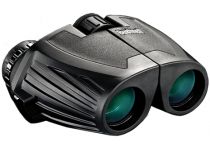 If you wear eyeglasses, be sure to check eye relief in the compact binocular specifications. Eye relief is the distance your eyes can be from the binocular eyepieces and still see a full field of view. It is a critical spec for us eyeglasses wearers, because eyeglasses don't allow us to get our eyes close to the eyepieces as folks who don't wear eyeglasses. Sure, you can always take your glasses off and put them in a pocket or such, but that really defeats the idea of carrying a compact binocular in the first place. We carry a compact for convenience, after all.
If you wear eyeglasses, be sure to check eye relief in the compact binocular specifications. Eye relief is the distance your eyes can be from the binocular eyepieces and still see a full field of view. It is a critical spec for us eyeglasses wearers, because eyeglasses don't allow us to get our eyes close to the eyepieces as folks who don't wear eyeglasses. Sure, you can always take your glasses off and put them in a pocket or such, but that really defeats the idea of carrying a compact binocular in the first place. We carry a compact for convenience, after all.
In general, it is harder to find a compact binocular with suitable eye relief than it is to find a full size binocular with suitable eye relief for use with glasses. Why? The smaller bodies and eyepiece housings on compact binoculars do not offer room for the larger, longer eye relief eyepiece designs usually found on larger binoculars with their larger housings. As a result, you need to shop more carefully for a compact binocular with enough eye relief to use with glasses. You will need at least 14mm or 15mm of eye relief to see enough of the field of view when wearing your glasses to be useful, though this actual amount can vary from person to person. In a pinch, I can get by with as little as 13mm, but larger folks usually need at least 15mm and a few people will need even more, especially if they are using eyeglasses with thick glass lenses.
Field of View
Contrary to what some people have been told and taught, the size of the front lens does not affect the field of view - the width of landscape you see when you look through a binocular. Field of view is a matter of magnification and eyepiece design, not size of the front lens. A compact binocular can have the same general field of view as its larger sibling with larger front lenses. True, you rarely find a " wide angle " compact binocular, since the small eyepiece housings on compact binoculars do not allow for more sophisticated eyepiece designs, but you can get plenty when it comes to field of view in a compact binocular. Checks the specs if in doubt. Field of view is not a reason to reject a compact binocular.
Waterproofing
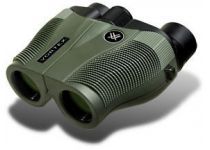 If you plan to use your compact binocular in cold or wet weather or any other extremes in climate, be sure to get a model advertised as waterproof. Waterproofing not only protects against moisture, it also means better seals against dirt and dust and changes of temperature than a model that is not waterproof. Note: it must say the word waterproof to qualify as waterproof compact binoculars, not weatherproof, rain proof, climate proof, or another label. A binocular that is waterproof will always list this feature in the description and/or the specifications when present. The good news is that nearly all compact binoculars over $100 and many under $100 have this feature.
If you plan to use your compact binocular in cold or wet weather or any other extremes in climate, be sure to get a model advertised as waterproof. Waterproofing not only protects against moisture, it also means better seals against dirt and dust and changes of temperature than a model that is not waterproof. Note: it must say the word waterproof to qualify as waterproof compact binoculars, not weatherproof, rain proof, climate proof, or another label. A binocular that is waterproof will always list this feature in the description and/or the specifications when present. The good news is that nearly all compact binoculars over $100 and many under $100 have this feature.
Focusing
A properly designed compact binocular should allow you to focus the binocular with one finger and, if you plan to use your binocular outdoors in cold or extreme weather conditions, you will also need a compact binocular that offers a large and easily turned focusing knob. Compact binoculars with tiny focusing knobs are all but impossible to focus while wearing gloves. Those dainty compact binoculars with a petite focusing knob may work great at the opera or theater, but they are not suitable for use under extreme climate conditions.
Armoring
Armoring protects the binocular from scratches and makes it quieter when it strikes an object, which is important when around wildlife. Armoring also makes a binocular more comfortable to hold in hot or cold weather and armoring can also help you get a better grip on compact binoculars. Armoring does not, however, make a binocular waterproof. That's a matter of internal seals, not an outer covering.



